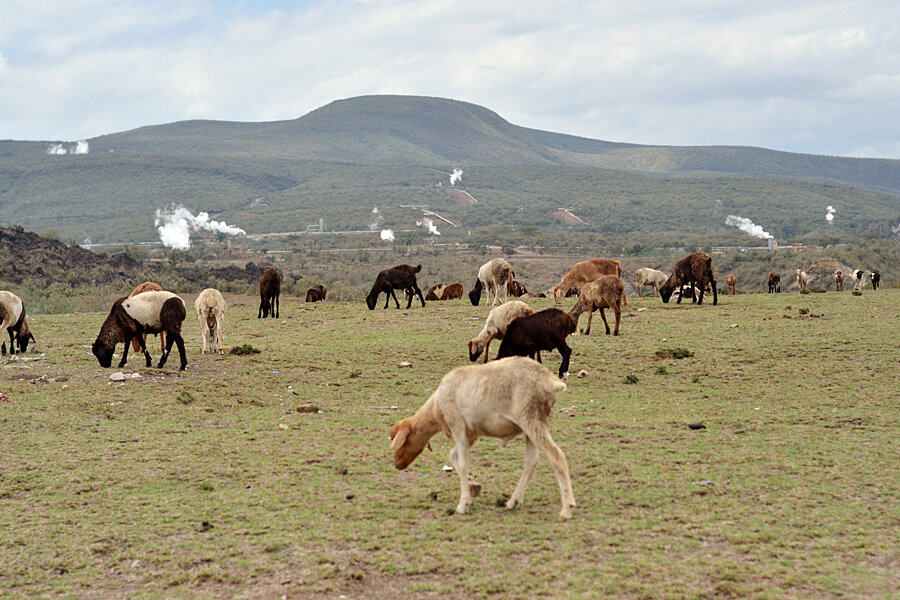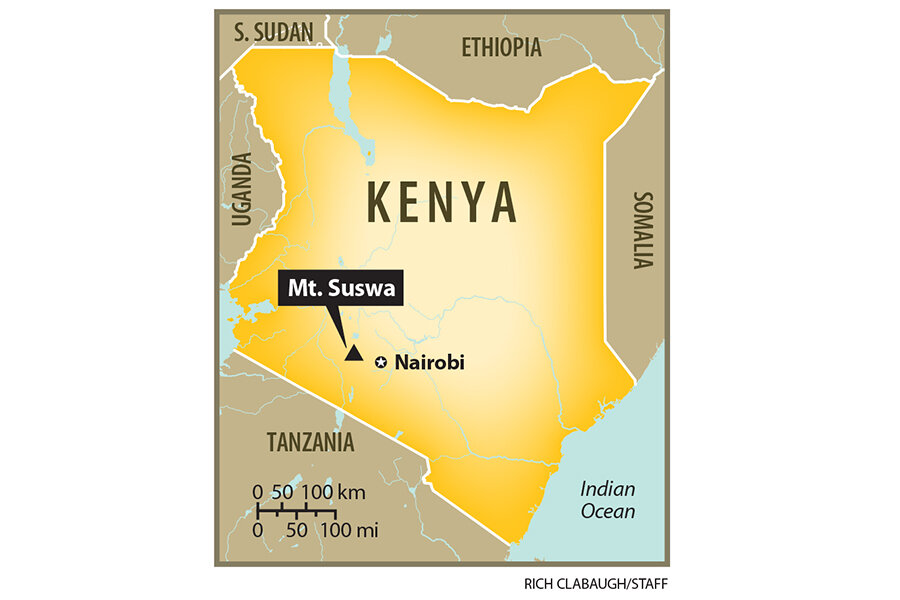Kenya conundrum: Kick out Masai herders to develop geothermal energy?
Loading...
| MT. SUSWA, KAJIADO COUNTY, KENYA
Sitting by his dung hut at sunrise, Daudi Maisiodo, a Masai herdsman, praises Mt. Suswa, a smoldering volcano on Kenya's Great Rift Valley where he lives.
"It's the best land," Mr. Maisiodo says of the mountain slopes. "There's firewood. There’s plains with enough space for pasture. You can grow maize....There's red and white ochre ... for rituals."
The mountain is rich in another way as well. Hot springs and fumaroles, the cracks in the earth's crust that belch steam, indicate that magma-heated rocks are only a mile below, close enough to be tapped for lucrative geothermal energy.
Suswa holds part of Kenya's vast undeveloped reserves of geothermal energy, which the government wants to exploit in order to help propel the East African nation to industrialized, middle income status.
Already, Kenya is Africa's largest producer of geothermal and the ninth-largest worldwide. But the 424 megawatts currently generated represent less than 1/20th of the energy locked beneath a string of volcanic fields in the Rift Valley. Suswa alone has an estimated 600 untapped megawatts.
Realizing Kenya's geothermal potential would cut energy costs and power economic expansion. But it could come at a high price: displacing thousands of indigenous Masai people who, after a century of losing land rights, are upset at being moved again.
"We don't like it," says Maisiodo of the budding geothermal exploration at Suswa. "We fear many people will come and take our land."
As seen from Nairobi, Kenya simply needs more electricity. Only a third of Kenya's 40 million citizens are connected to the national grid. Some 70 percent of businesses cite lack of power as a key obstacle to growth.
Geothermal offers one of the most viable solutions.
"The resource potential is quite huge [in Kenya]," says Meseret Teklemariam Zemedkun, program manager of the UN-funded African Rift Geothermal Development Facility in Nairobi. "It is estimated to be close to 10,000 megawatts of potential and probably there's more yet to be discovered because we are in the Great Rift."
For comparative purposes, nearly 12,000 megawatts of geothermal energy worldwide were converted to electricity in 2013, according to the Earth Policy Institute in Washington.
Geothermal, which pipes super-heated steam from the earth's crust to power turbines at the surface, has many advantages. It is renewable, not reliant on fossil fuels, and emits comparatively little greenhouse gas. It is also a consistent energy source, compared to hydroelectric dams that now provide most of Kenya's energy, but that run to a standstill during droughts.
Geothermal is also cheap. If Kenya achieves its goal of adding 1646 geothermal megawatts in the next two to three years, alongside other energy targets, the country would slash home-consumption energy tariffs by 47 percent.
Much of that drop comes from replacing old diesel plants with geothermal.
"As we get more geothermal we can get cheaper more affordable power," says Peter Ouma, a geothermal manager at KenGen, Kenya's state-owned electricity generation company.
Much of the expansion, however, is on land used by Masai who have long been pushed aside for national parks, energy production, and agriculture.
At the Olkaria geothermal complex – about 35 miles north of Suswa and a place where 1,000 megawatts of potential lie beneath the fissured landscape – some 150 Masai families, about 1,000 people, were evicted and resettled last month.
Olkaria produces more than 400 megawatts and is expected to more than double its output by 2017, a new power source for proposed industrial parks that would handle textile, paper, and steel plants.
Though some local Masai have jobs as security guards, drillers, and drivers, the majority fear being kicked out to make way for factory worker housing.
The latest relocated families complain of rampant corruption in the compensation process. KenGen, they say, bypassed the elders to strike deals with Masai representatives of their own choosing.
Partisans have come to blows over the issue. In July 2013, unidentified goons under protection of armed police stormed Masai villages atop a potential hotspot in the Olkaria area, burning dozens of houses.
Masai activists have petitioned the World Bank, a major financer of Kenyan geothermal, to pressure energy developers to clean up their actions.
The Olkaria incidents worry Maisiodo, the herdsman. "We've heard of the other projects...that people are being displaced," he says, noting that energy firms have brought representatives from other Masai regions to speak for Suswa's residents.
His neighbor Jeremiah Saitabao hopes developers learn from Olkaria to do better at Suswa. "I'm partly against [the energy companies], not fully against," Mr Saitabao says, drawing the line at displacement of families. "If there are strong rules guiding ... I have no problem with the production of the geothermal."






